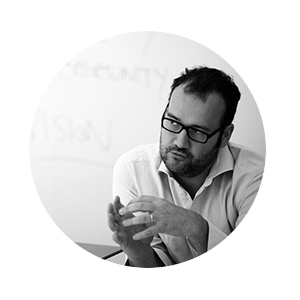Master in City & Technology 2021/22 – Term I
Seminar Name: Future Mobility
Total Hours: 30 hours
Faculty: Federico Parolotto, Francesca Arcuri, Federico Marcantognini from Mobility in Chain

Credits: Gabino Carballo
Abstract
Streets compose, by far, the largest component of the publicly-owned territory of cities. They are used daily by most people in a wide variety of capacities and contexts, as transportation facilities, as spaces of consumption and leisure, as places of politics and protest, as places to make a living, and as places to live for the unhoused.
The importance of streets as a critical public space for social interaction is widely recognized by urban planners and cities alike. Urban planners have proposed ambitious strategies to promote pedestrian-friendly environments to foster active transportation alternatives (Calthorpe, 1993; Duany, Plater-Zyberk, Krieger, & Lennertz, 1991). Cities are investing vast amounts of resources in improving the quality of their streets, in part motivated by the conviction that well-designed streets will improve their citizens’ quality of life. This growing demand for street upgrading and renewal warrants further study on what makes streets desirable to pedestrians. An important step towards better street design is to understand where people walk and whether these choices are influenced by the built environment.
More recent work has incorporated advanced data collection methods to shed light on the relationship between pedestrian walking and the built environment. Examples include using GPS data to track pedestrian movements and using 2D and 3D GIS and machine learning techniques to construct more comprehensive measures of the built environment (Yin, 2017; Yin & Wang, 2016).
This seminar will focus on pedestrian movements around the Plaza Catalunya, and will touch upon topics such as new sources and technologies in the collection of ‘big data’ for pedestrian and footfall oriented analysis, learning key aspects and metrics of walkability, and how data can support transformative processes for better, safer and walkable streets.

A visual representation of the winning proposal “Loreto Open Community” for Piazzale Loreto in Milan, Italy. MIC is the mobility and transport consultant. Image credits: Ceetrus-Nhood
Learning Objectives
At course completion the student will further develop skills that will be relevant during students’ professional career, including:
• Critical thinking towards the use of data in urban design and planning.
• Learn and practice with some pedestrian surveys methodologies.
• further expand on-site observation and analysis skills.
• Capability to identify areas of improvement related to city design & planning.
Faculty

Federico Parolotto is Senior Partner at MIC – Mobility in Chain, which he co-founded with Davide Boazzi and Federico Cassani in 2009. He began his career with SOM in the UK (1994–98) and worked with Systematica in Milan (1998–2008) where he was made partner in 2006. He has been involved as transport planner in numerous major urban planning projects worldwide. He collaborated with Foster + Partners on the new „zero-carbon city“ of Masdar, planned in Abu Dhabi, and on the winning entry in an international design competition for a new city near Seoul, South Korea. He has worked with OMA, UNstudio, KPF and other renowned studios on several groundbreaking projects. He was a speaker in numerous international events including the Greenbuild conference (Boston), Ecological Urbanism (Harvard University, Cambridge) in 2009; Helsinki Design Lab in 2010; Superurbano Conference in Padova in 2011; Moscow Biennale in Moscow; SPIEF in Saint Petersburg; World City Forum in Naples and Connect Ideas Maximize Impact In Stuttgart in 2012. In 2011 he co-founded Flow(n)- www.flow-n.eu – MIC research unit. He lectured in several international universities and, among various publications, his essays were published in 2011 on “Ecological Urbanism” by Mohsen Mostafavi and Gareth Doherty and in 2012 on “Ecological Urban Architecture: Qualitative Approaches to sustainability” by Thomas Schroepfer. Federico since 2012 is a member of the scientific committee for the new Milan Sustainable Transport Master Plan.

Francesca Arcuri: With a technical background as an aerospace engineer specialized in sustainable technologies, Francesca Arcuri has been a consultant at MIC since 2009. Her professional experience started in 2007 as a research assistant and later as a consultant for the Politecnico di Milano. At MIC, she has worked as a transport planning consultant on several international projects, gaining experience especially on a scale that ranges from masterplan to town and regional scale. She has also developed a specific expertise on sustainable planning and mobility on-demand systems. Currently, she is a senior consultant and project manager at MIC.

Federico Marcantognini
He is a transport planner and civil engineer with international expertise at the intersection of urbanism, technology, agent-based modelling, data science, and visual storytelling — with a mission of creating more inclusive and accessible cities. Federico has a track record of work experiences across multiple disciplines, from digital technology implementations in various organizations (2004-11), to urban design, mobility and engineering in AEC firms such as OMA Rem Koolhaas in Rotterdam (2011-12), RPBW Renzo Piano in Milan and Genoa (2013), Jacobs Engineering in Sydney and Auckland (2018-21), and MIC in Milan (2013-18/2021). Recent projects include the Data-Driven Transport Model of the New South Wales State, the Sydney Metro, and the Melbourne Metropolitan Railway Plan – among the biggest city shaping transformation projects across Oceania. He is currently the Head of the R&D division at MIC, and the Pedestrian Planning Lead for the Melbourne Airport Rail.
